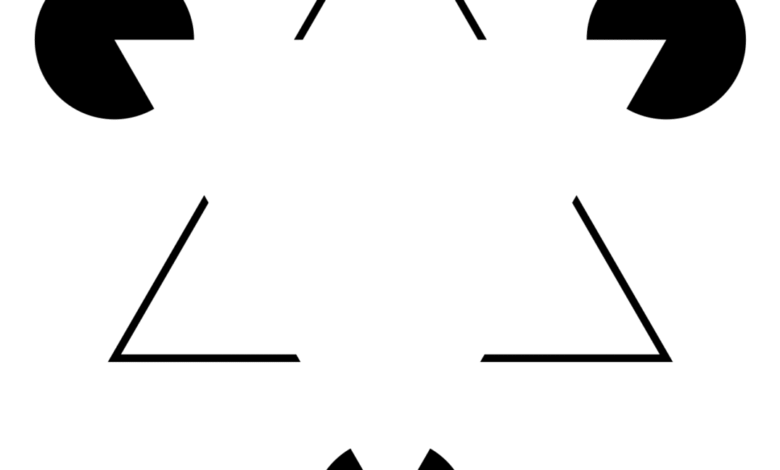How Your Brain Sees What Isn’t There

▼ Summary
– A new study in Nature Neuroscience identified specific neurons called IC-encoders in the visual cortex that directly represent visual illusions.
– Illusory contours are perceived edges that aren’t physically present, such as in the Kanizsa triangle where three shapes create the illusion of a triangle.
– For over 20 years, research has shown neurons in primary and higher visual areas respond to both real and illusory contours in primates, humans, and mice.
– The brain fills in missing edges by integrating local and long-range signals and using prior knowledge, rather than just passively recording visual input.
– Researchers used advanced brain imaging and direct neural manipulation to causally test and identify neurons encoding these perceptual inferences.
Our brains possess a remarkable ability to perceive shapes and edges that don’t physically exist, a phenomenon known as illusory contours. This fascinating aspect of human vision reveals how our neural circuitry actively constructs our visual reality rather than simply recording what’s before our eyes. Recent neuroscience research has made significant progress in identifying the specific brain cells responsible for this perceptual magic.
According to Hyeyoung Shin, a neuroscience professor at Seoul National University, visual illusions serve as both entertainment and scientific tools for understanding perception. Shin led a groundbreaking study published in Nature Neuroscience that identified a specialized group of neurons called IC-encoders within the visual cortex. These particular cells directly represent visual illusions in our brain’s processing system. The research represents a collaborative effort between institutions including the University of California Berkeley, the Allen Institute in Seattle, and Seoul National University.
A classic demonstration of this phenomenon is the Kanizsa triangle, where three Pac-Man-like shapes arranged in a specific pattern create the compelling impression of a bright white triangle with defined borders. When you cover the Pac-Man shapes with your fingers, the illusion disappears, revealing that no actual triangle exists in the image. Scientific evidence supports what we experience visually, for more than two decades, studies across primates, humans, and mice have consistently shown that neurons in both primary and higher visual areas respond to both real and illusory contours.
The critical question becomes: how does our brain generate these nonexistent edges? This presents a challenge for traditional “bottom-up” models of vision that compare the visual system to a simple camera recording retinal input. In reality, even at the earliest stages of visual processing, our brain doesn’t just passively receive information. It actively integrates signals from both local and distant neural networks while drawing upon accumulated knowledge about the statistical regularities of our visual environment. Essentially, our visual system makes educated guesses about what we’re seeing based on previous experience.
The recent study successfully identified the specific neurons that encode these visual inferences. Researchers employed advanced brain imaging techniques combined with direct causal testing, physically stimulating the neurons to observe the resulting effects on perception. This approach allowed them to establish a clear connection between neural activity and the experience of seeing what isn’t actually there.
(Source: Ars Technica)
